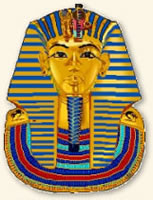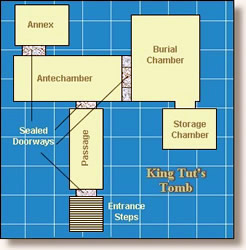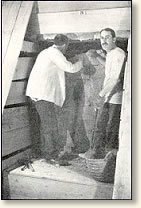









 |
| The golden mask that adorned Tut's inner coffin |
 |
| The Tomb |
 |
| Lord Carnarvon (left) and Howard Carter break through to the burial chamber |
Powered by vBulletin® Version 5.6.5
Copyright © 2025 MH Sub I, LLC dba vBulletin. All rights reserved.
منتديات قدماء تخلي مسؤوليتها عن أي اتفاق تعاوني أو تجاري يتم بين الأعضاء خارج المنتدى وكل عضو يتحمل مسؤولية ما يقوم به
جميع الأوقات بتوقيت جرينتش+3. هذه الصفحة تم إنشائها في 04:57 AM.
تعليق